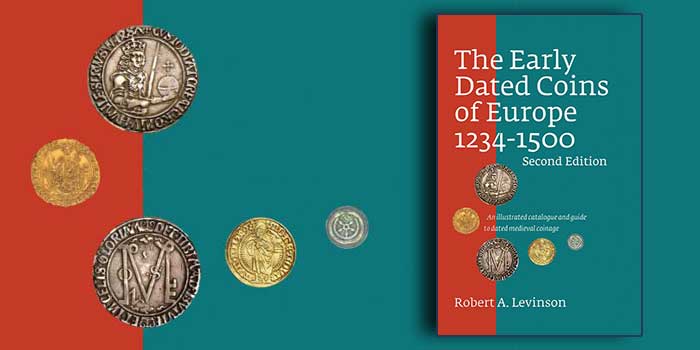The appearance of a date on a coin is something so obvious to the layman that it is taken for granted.
It will no doubt then come as a shock to discover that the custom of placing the year of minting on coins is absent for most of coinage history. It is, rather, a relatively modern phenomenon that did not begin in earnest until the end of the Renaissance, the start of the era of what numismatists would call “modern” coinage.
When the first edition of Robert A. Levinson’s The Early Dated Coins of Europe, 1234-1500 made its debut in 2007, it presented for the first time a comprehensive listing–by date, region, state, ruler, and mint–of all the known types of gold, silver, and copper coins struck in medieval Europe with an Anno Domini date of 1500 or earlier. Since then, it has become a worldwide reference for such coinage.
These “early dated coins” form one of the first links between medieval and modern coinage. Anno Domini dating of coins using Latin script did not begin until the mid-13th century and did not become prevalent in Europe until three centuries later. Separating those few coins with dates from the many struck without them at a thousand mints by hundreds of different coin-issuing authorities presented the author with a daunting task.
The first edition of this book rendered obsolete the only volume remotely comparable, the long out-of-print work by Albert Frey in 1915. Today, when an early dated coin is sold, whether in Europe or in America, it is accompanied by a Levinson reference number. The revised and updated 336-page second edition is in full color throughout, with improved illustrations – including more than 200 new ones, pushing the total to over 1,200. More than 125 new coin types and subtypes have been added, and there are over 500 updates to catalog descriptions.

The book covers the eight distinct regions in which dated coins were issued (Germany, Southern Netherlands (now Belgium), Northern Netherlands (now the Netherlands), Hapsburg lands, Switzerland, Scandinavia, Italy, and France) and organizes the known pre-1501 Anno Domini dated coins chronologically within each region. There is, for each of the coins listed, its full legend, description, ruler’s name, bibliographic references, weight, and rarity. Prices for each coin are given in very fine and extremely fine condition.
read more here @ Coin Week
No comments:
Post a Comment